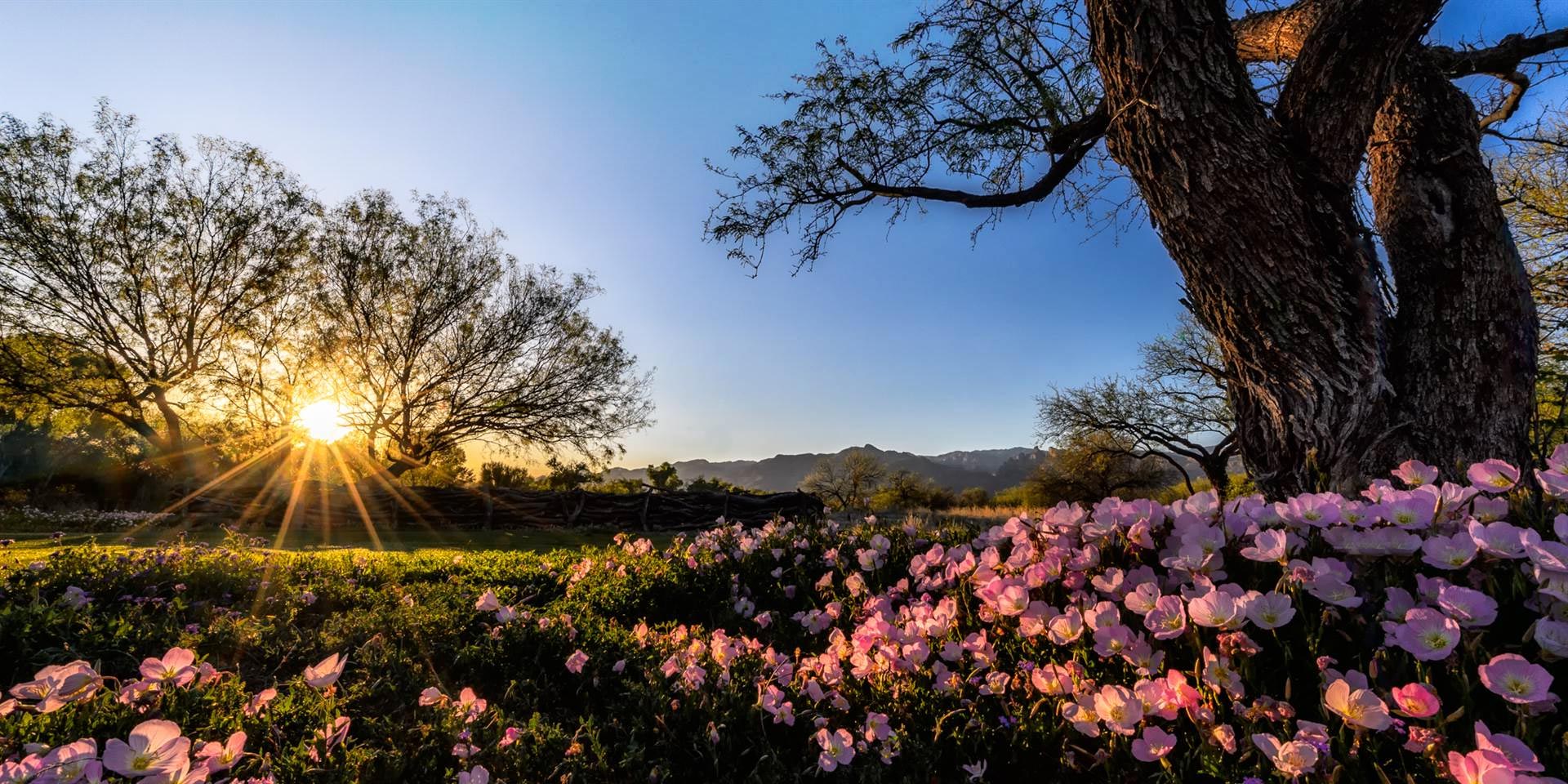Plant Profile: Flattop Buckwheat
Posted Jun 20, 2022
Who Put the ‘B’ in Buckwheat?
By Kathleen M. McCoy, AZNPS Phoenix Chapter Member
Does “flattop buckwheat” summon visions of stacks of pancakes dripping in delicious honey? If so, your mouthwatering vision is partially correct. Flattop buckwheat (Eriogonum fasciculatum var. polifolium), also known as Eastern Mojave buckwheat, is a low, rounded, fast-growing shrub not to be confused with common buckwheat (Fagopyrum esculentum), a domestic crop cultivated for edible seeds.
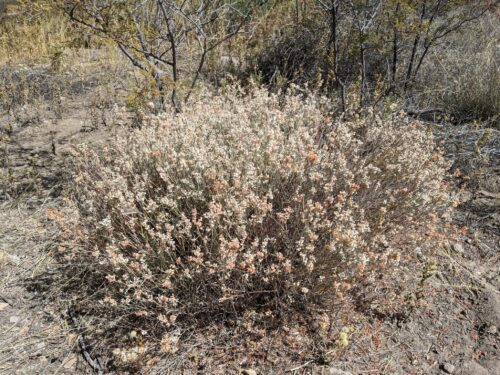
Across the entire Southwest over 355 members of the buckwheat family (Polygonaceae), often difficult to distinguish structurally, find their home in sunny coarse and well drained soils along washes and rocky slopes. In the Mojave and Sonoran Deserts, E. fasciculatum is the most common buckwheat.
Although lots of Flattop buckwheat decorate the desert, this miniature evergreen fully grown is usually only 1 foot tall by 2 feet wide with typical desert gray-green foliage. Arriving in late spring, clusters of flat-topped white flowers gradually turn pink in summer, then rust colored in fall.
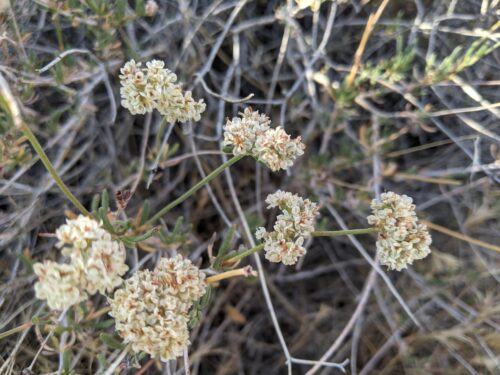
The ‘B’ in buckwheat is for butterflies, bees, and birds. The slightly fragrant flowers are a wildly popular lure for several butterflies, most notably the Mormon metalmark (Apodemia mormo), the Rocky Mountain dotted-blue (Euphilotes ancilla) and the Lupine blue (Icaricia lupini). These butterflies also use Flattop buckwheat as a host plant for their caterpillars.
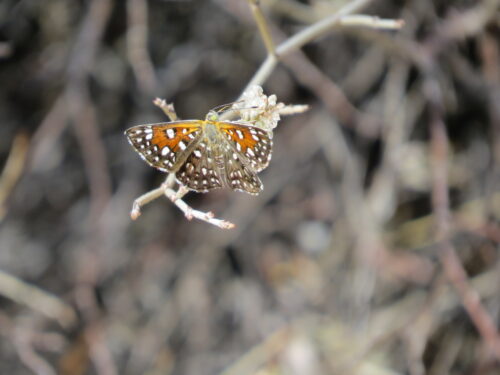
A favorite of bees, native and nonnative, this pollinator plant provides a good source of nectar. Luckily for humans, bees use these plants predominantly as a basis for tasty honey. Not only is this honey healthy for our diets, but also for the economy. E. fasciculatum is the principal honey-producing plant in southern California. When other flowers have long gone to seed, flattop buckwheat still supplies food for hungry birds due to its extensive growing season.
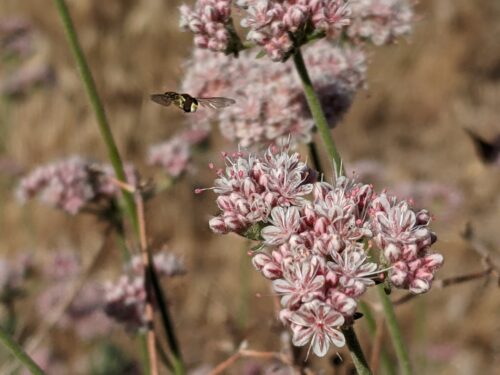
In fact, some farmers use buckwheat for a dual purpose, making honey and as a form of integrated pest management. When planted next to crops or in cultivated gardens, their nectar attracts beneficial insects that in turn reduce pests. Pest reduction means less need for chemicals in our flower beds and vegetables. Flattop buckwheat can also serve as a ground cover crop, helping to improve soil health plus providing crops protection from soilborne pathogens.
Wild E. fasciculatum is a low-profile desert plant, often overlooked and underappreciated. If you want to enhance and create an almost year-round pollinator garden, raise Flattop buckwheat… a low maintenance, easy-to-grow plant that sweetens the pot for butterflies, bees, birds, and possibly your buckwheat pancakes.
Photo credits: Lisa Rivera
Sources:
SEINnet. Eriogonum fasciculatum. https://swbiodiversity.org/seinet/taxa/index.php?taxon=3474&clid=8
SEINnet. Eriogonum fasciculatum var. polifolium. https://swbiodiversity.org/seinet/taxa/index.php?taxauthid=1&taxon=12915&clid=15#
Southwest Desert Flora. (2017). Eriogonum fasciculatum, flat-top buckwheat. http://southwestdesertflora.com/WebsiteFolders/All_Species/Polygonaceae/Eriogonum%20fasciculatum,%20Flat-top%20Buckwheat.html
Xerces Society. (n.d.). Who are the pollinators? https://www.xerces.org/pollinator-conservation/about-pollinators

